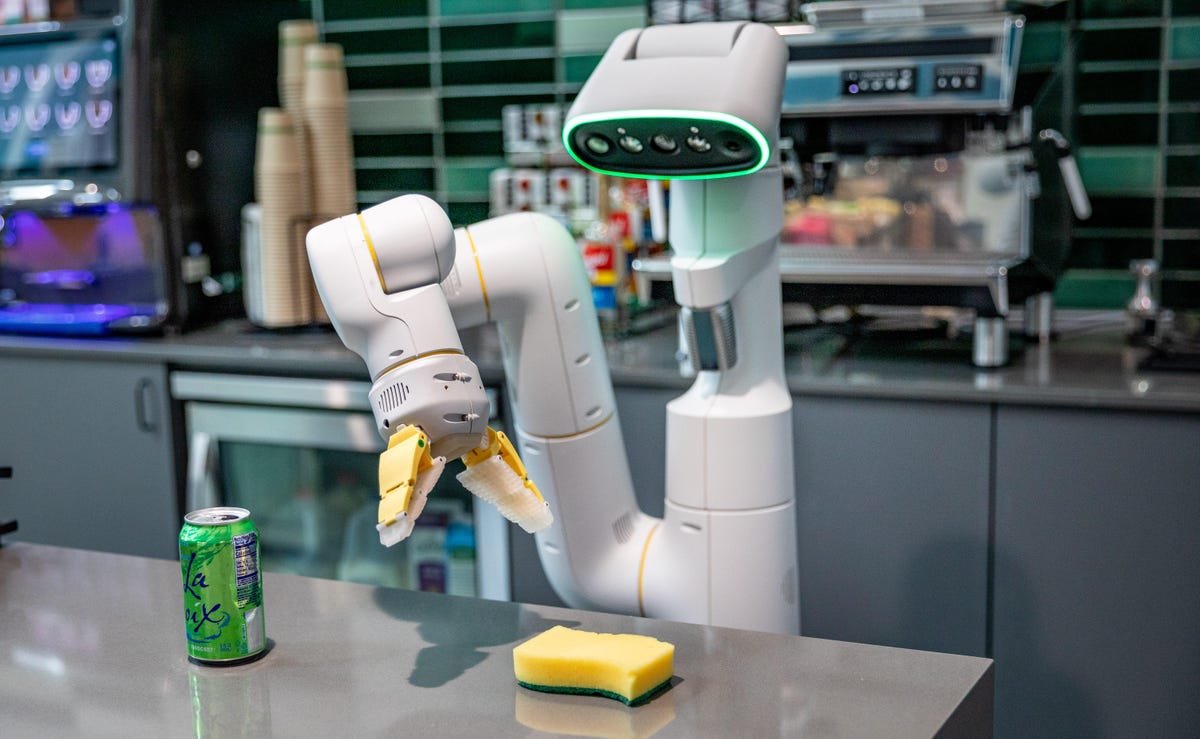Best Laptops
Google Robot Tech Can Understand You on a Human Level
Instructing robots to know language seems to assist them cope with the open-ended complexity of the true world, Google has found.
The tech large has grafted its newest artificial intelligence technology for handling language, called PaLM, onto robots from Everyday Robots, one of many experimental divisions from guardian firm Alphabet. It revealed the ensuing know-how, known as PaLM-SayCan, on Tuesday.
With the know-how, Google’s AI language mannequin brings sufficient data of the true world to assist a robotic interpret a obscure human command and string collectively a sequence of actions to reply. That stands in stark distinction to the exactly scripted actions most robots observe in tightly managed circumstances like putting in windshields on a automobile meeting line. Crucially, Google additionally elements within the robotic’s skills as a technique to set plan of action that is really potential with the robotic’s abilities and surroundings.

Google’s PaLM-SayCan robots use AI language fashions to know that selecting up a sponge is helpful somebody who wants assist with a spilled drink.
Stephen Shankland/CNET
The know-how is a analysis venture that is prepared for prime time. However Google has been testing it in an precise workplace kitchen, not a extra managed lab surroundings, in an effort to construct robots that may be helpful within the unpredictable chaos of our precise lives. Together with tasks like Tesla’s bipedal Optimus bot, Boston Dynamics’ creations and Amazon’s Astro, it exhibits how robots might finally transfer out of science fiction.
When a Google AI researcher says to a PaLM-SayCan robotic, “I spilled my drink, are you able to assist?” it glides on its wheels by a kitchen in a Google workplace constructing, spots a sponge on the counter with its digital digital camera imaginative and prescient, grasps it with a motorized arm and carries it again to the researcher. The robotic can also acknowledge cans of Pepsi and Coke, open drawers and find luggage of chips. With the PaLM’s abstraction skills, it may well even perceive that yellow, inexperienced and blue bowls can metaphorically signify a desert, jungle and ocean, respectively.
“As we enhance the language fashions, the robotic efficiency additionally improves,” stated Karol Hausman, a senior analysis scientist at Google who helped exhibit the know-how.
AI has profoundly remodeled how pc know-how works and what it may well do. With fashionable neural community know-how, loosely modeled on human brains and likewise known as deep studying, AI techniques are skilled on huge portions of messy real-world knowledge. After seeing 1000’s of images of cats, for instance, AI techniques can acknowledge one with out having to be advised it normally has 4 legs, pointy ears and whiskers.
Google used an enormous 6,144-processor machine to coach PaLM, short for Pathways Language Model, on an enormous multilingual assortment of internet paperwork, books, Wikipedia articles, conversations and programming code discovered on Microsoft’s GitHub website. The result’s an AI system that can explain jokes, full sentences, reply questions and observe its personal chain of ideas to cause.
The PaLM-SayCan work marries this language understanding with the robotic’s personal skills. When the robotic receives a command, it pairs the language mannequin’s strategies with a set of about 100 abilities it is discovered. The robotic picks the motion that scores highest each on language and the robotic’s abilities.
The system is proscribed by its coaching and circumstances, however it’s way more versatile than an industrial robotic. When my colleague Claire Reilly asks a PaLM-SayCan robotic to “construct me a burger,” it stacks wood block variations of buns, pattie, lettuce and a ketchup bottle within the appropriate order.
The robotic’s abilities and surroundings provide a real-world grounding for the broader potentialities of the language mannequin, Google stated. “The abilities will act because the [language model’s] ‘arms and eyes,'” they stated in a PaLM-SayCan research paper.
The result’s a robotic that may deal with a extra difficult surroundings. “Our efficiency stage is excessive sufficient that we will run this exterior a laboratory setting,” Hausman stated.
About 30 wheeled On a regular basis Robots patrol Google robotics places of work in Mountain View, California. Every has a broad base for steadiness and locomotion, a thicker stalk rising as much as a human’s chest peak to help an articulated “head,” a face with numerous cameras and inexperienced glowing ring indicating when a robotic is lively, an articulated greedy arm and a spinning lidar sensor that makes use of laser to create a 3D scan of its surroundings. On the again is an enormous purple cease button, however the robots are programmed to keep away from collisions.
Among the robots stand at stations the place they be taught abilities like selecting up objects. That is time consuming, however as soon as one robotic learns it, the ability could be transferred to others.
Different robots glide across the places of work, every with a single arm folded behind and a face pointing towards QR codes taped to home windows, fireplace extinguishers and a big Android robotic statue. The job of those ambulatory robots is to attempt to discover ways to behave politely round people, stated Vincent Vanhoucke, a Google distinguished scientist and director of the robotics lab.
“AI has been very profitable in digital worlds, however it nonetheless has to make a big dent fixing actual issues for actual individuals in the true bodily world,” Vanhoucke stated. “We expect it is a actually nice time proper now for AI emigrate into the true world.”
